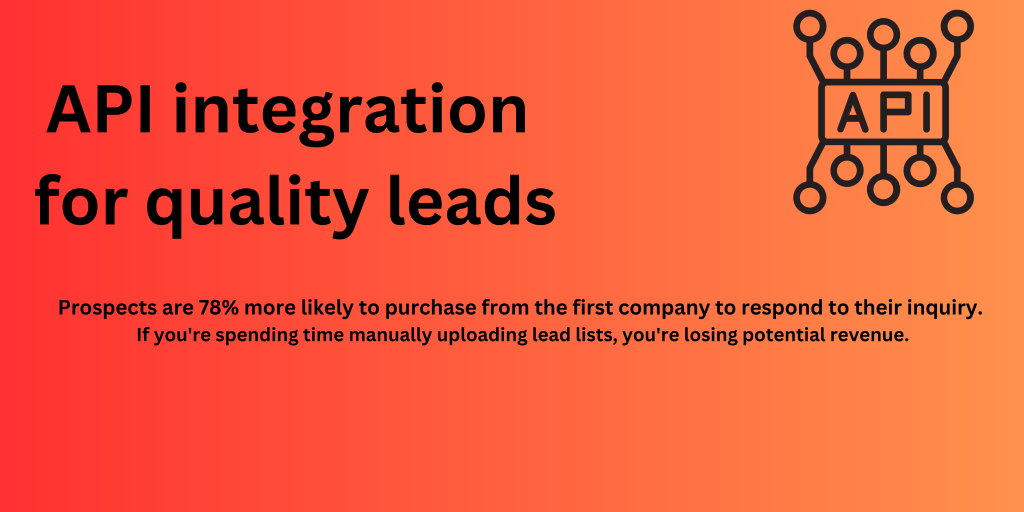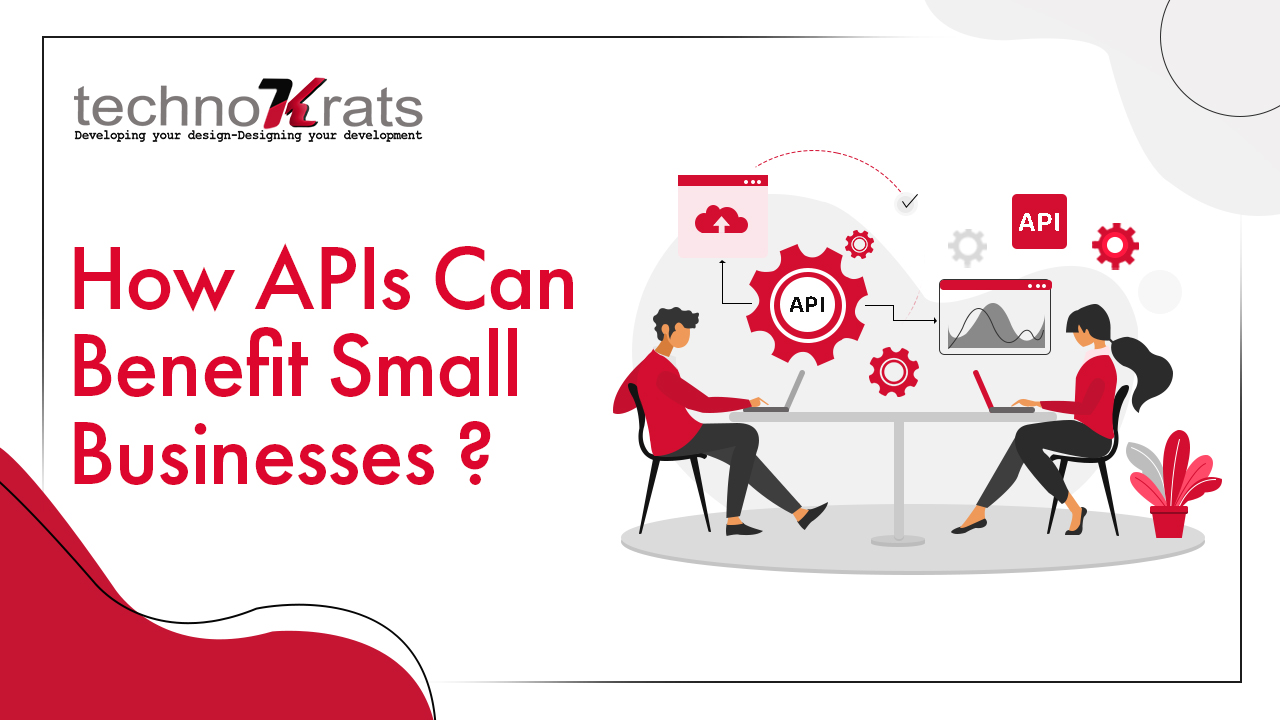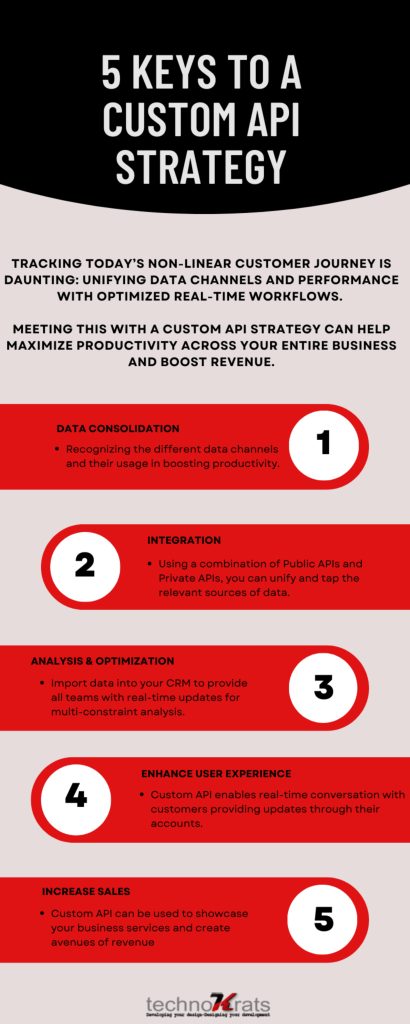With rapid digitization, the need for everyone to get the basics of technical jargon has become inevitable. Gone are the days when databases, servers, and other technical aspects of running a business were restricted to the IT department.
Thus, data centralization and integration for real-time usage have become challenging for small businesses, which is where the need for APIs comes into play. With API integration, the onus of maintaining large data sets generated each day is now on each member of the company from the sales to the finance team.
What is API?
An API or Application Programming Interface is defined as “a set of subroutine definitions, protocols, and tools for building application software”. API simply put allows an application to talk to another application in a structured way.
APIs have been around for quite some time, for example, when you are booking a ticket on an air ticket aggregator website, the website back end uses an API to access the airline’s database to retrieve ticketing information which the UI then graphically renders for you.
APIs are basically a structure to allow various applications to “interact” with each other. The main advantage of an API is lightning-fast data exchanges, across robust security layers with access controls, with unparalleled stability for an optimized communication experience among your applications.
How does API work?
To understand this, we can use a non-technical analogy. For example, take the scenario of a restaurant. Now the chef cannot personally attend to every request at every table so the restaurant comes up with an intermediary, the waiter. The waiter here is the intermediary transporting information back and forth. So the API can be thought of as the waiter.
A person initiates an API call or API request, a set of protocols and code that instructs from the client to the server, the server then processes the information and provides a response back to the client.
Standard components of API request
- Type of request: the API call includes the type of request that the client is actually sending to the server.
- Credentials: Since you want only authorized personnel from gaining access to data, the API call includes authorization credentials for validation.
Although web APIs are the most common visible form of API, there are other types as well like internal APIs that are used by companies for their internal databases. Therefore, we now come to the different types of API’s that are available.
Types of APIs – Web & Rest
There are four different types of API’s that generally exist, they are SOAP API’s, RPC APIs, Websocket APIs and REST APIs.
REST API
It is the most common type of API found on the web today due to their flexibility and easy-to-use standard. REST API is an acronym for “representational state transfer”. The REST API is a software design with a predefined set of operations. The actual data or the “payload” is defined inside of the data request is formatted in any language like HTML, XML or JSON. The underlying protocol for this is HTTP which is how web browsers retrieve information from servers. The main requests utilized are – GET, POST, PUT, and DELETE.
4 Main parts of REST API Request
- HTTP method – for example GET or POST for the type of request.
- URL – the website address or the “endpoint” of the request.
- Headers – information like data format, authentication tokens, and other admin-related information.
- Body – the actual request that houses the information requested
WEB API
A WEB API is an API that acts as an interface between a browser and a web server. Every web server application is an API, however, not all APIs are WEB APIs. A REST API is just a specific type of WEB API that uses a standardized set of protocols so it is much easier to use and implement.
Benefits of API Integration

In today’s dynamic world, we often encounter the myth of one-size-fits-all solutions, especially when it comes to software applications. Businesses can benefits from using API’s as the workflow can be streamlined and automated providing ease of use and scalability to better serve customers.
Say you have two applications and you want them to interact with each other and gather data. So your CRM needs to connect with your marketing stack so changes made on one side reflect on all your other applications as well. How do we go about doing that? Put simply, an API integration is to achieve a connection between 2 (or more) applications using the API provided that, the applications involved allow the system to exchange data.
Through the power of API integrations, these apps hold the key to unleashing your full potential in marketing, sales, and revenue projects. API acts as a formidable bridge, connecting data, applications, and devices, while creating seamless interaction among various programs.
Increased Sales
APIs allow customers to quickly access information about products and services, so if someone is browsing an airline ticket booking website and finds a cheap price, it is an API that allows the website to communicate with the airline to complete the sale. Ease of use in cases like this has allowed companies to grow fast and increase sales.
Customer Satisfaction
Since APIs afford seamless transfer of information using automation, using an API for tasks like retrieving customer data, seamless login to apps and services, etc can increase customer satisfaction across the board. And happy customers are more likely to become loyal customers.
Additionally, satisfied customers would also be more likely to give a positive review about your business which enhances your reputation.
Increase Efficiency
APIs increase efficiency because they allow businesses to connect multiple applications seamlessly and provide scalability that reduces “friction” within business tasks. This increases the overall efficiency of your business processes.
Custom APIs allow businesses to easily connect different applications which have allowed many small and medium businesses to utilize and expand many different types of services that they otherwise would not have been able to. This has allowed customization of many services and helped applications like on-demand music and video streaming which has exploded in popularity over the years.
Examples of different types of API integration for businesses.
Now that we know how API’s can enhance and help your business to grow, we can look at a few common API integrations that are useful.
Facebook API integration – Facebook is one of the largest social media platforms today and has a massive user base. If you were to do a Facebook API integration, you could for example use Facebook login credentials to easily let users sign on to your platform. This allows customers to use a one click sign on service and significantly increases customer satisfaction and leads to growth.
Not only can businesses take advantage of the Facebook API for sign-in-related matters, but a business can also use the data generated to better target their Facebook and Instagram advertising. This is just a small piece of functionality that Facebook API brings to your business.
Google Analytics API Integration – Using Google Analytics API, you can access a host of functionalities that help businesses not only fetch data from multiple accounts, but you can also access reports and upload data to other applications as well.
Some of the things that you can do using the Google Analytics API include managing multiple properties and websites at once, analyzing and merging analytics data, and automation that creates custom dashboards and reports that can be exported regularly.
How to do API integration
API integration can be done in many different ways depending on the complexity and nature of the business and the tools that are being connected. For example, if a business is connecting a company database to an outside cloud provider to maintain backups of data, then the API has to be implemented differently than if we are connecting two different web services.
Steps to keep in mind while doing the integration.
Why do you need an API integration – We need to understand the reason we are going in for an API integration, what are the goals and requirements. If we are able to outline the needs at the outset, then the job is much easier and we can spend our time and money more efficiently.
Research the data structure – Before data is transferred and two applications are linked, we need to map out the data structure and schema of the connections so relationships between different sets of data can be decided from the start. This will save a lot of effort in case something goes wrong mid way.
Set up a team for API development – An API integration is complex and it requires knowledge and time. Once the basics have been decided, API experts build the custom API structures and connect the applications needed. If you do not have developers, you can outsource API development and integration service to experts.
Testing the build – After that has been done, extensive testing needs to be carried out to ensure the correct data is being returned and everything is working properly.
Review performance – Even if the API integration has happened smoothly, we need to keep monitoring everything to ensure that there are no problems with updating and maintaining data.
What is middleware?
For API integration and automation to work hand-in-hand and data to maintain its integrity across the entire tech stack, we use software called middleware that does the work of connecting the APIs of two different software programs. They basically act as “point-to-point connectors”.
While using middleware, there are a few aspects that need to be considered.
Error reporting – The point of APIs is to save time and automate tasks, so we need to ensure the middleware application we are using has proper error reporting to alert users of any downtime or other errors.
Cost – Of course cost is a major criteria to consider, does the middleware application allow your business to scale efficiently and cost effectively or do they practice outdated business models that charge extra for adding users. Keeping in mind the cost factor means there are no surprises later on.
Scalability – You must also keep in mind the scalability of the middleware you are using, as your business grows, will it be able to handle the growth? Businesses have variable data needs and the applications must be able to support that.
Connector upgrades – The current marketing stack has almost nine to ten thousand applications, everything from Salesforce to Twilio. We need to consider the scalability of the connector we are using and if it grows along with the market.
What are Low code automation platforms?
If all of this still sounds like a lot for your business, then worry not, there are options available. “Low code automation platforms” allow you to create workflows that define how a task is supposed to be done but does not require you to know extensive coding. Low code automation platforms like Zapier, Hubspot, IFTTT have a few distinct advantages and characteristics.
Complete API Integration – These platforms have a catalog of apps from marketing, finance, HR, Internet of Things like Alexa etc.
Quick Connector Updates – The platform should have the ability to create new point-to -point connectors regularly depending on the business requirement.
Automation – This is the key point here, the platforms should be able to automate tasks and on multiple cloud based services. For example, a sales and marketing service should update a new customer acquisition in the CRM system automatically based on preset conditions that you provide.
Ease of Use – The platform should be highly usable and accessible to people without deep technical knowledge. It should allow non-technical people to integrate different cloud based services with ease. Many of these platforms have drag and drop features that really help when it comes to usability.
Analytics – Analytics has become the bedrock of web services. The platform should have strong analytics capabilities that allow users to quickly diagnose issues and fix them easily.
So now we can focus on the cost, how much will it cost to build custom API solution? Full scale enterprise-grade API development and integration can cost upwards of $1,000 depending on the complexity of the project and the number of software engineers required. Many times using off the shelf automated products can cut down costs significantly, however, they may not fit the bill for everyone so we need to evaluate business requirements closely.
If you are looking for a full-service API solution that can help you implement APIs on a budget, Technokrats can help. We have been in business for over a decade and have API experts to help you with all of your software needs.


